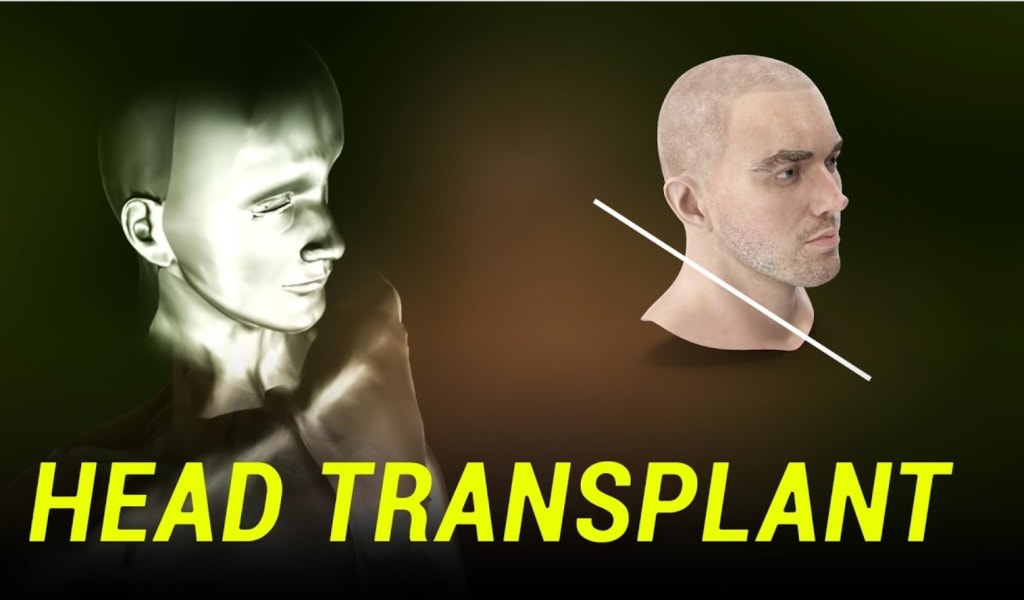Can you transplant a head to another body?
Transplanting a Head: The Ethical and Scientific Frontiers of Body Transfer

In the annals of medical history, March 14th, 1970, marks a peculiar and controversial milestone. On that day, Dr. Robert White, a renowned neurosurgeon, embarked on a daring experiment: the transplantation of a monkey's head onto another's body. This audacious endeavor, emblematic of both scientific ambition and ethical ambiguity, propelled us into a realm where the boundaries of possibility merge with the complexities of morality. As we delve into the intricacies of this historic event, we confront not only the technical challenges but also the profound philosophical questions it raises. The genesis of White's ambition can be traced back decades, to a time when the notion of transplanting entire bodies seemed more akin to science fiction than medical reality. Yet, driven by a relentless pursuit of innovation and a fervent desire to alleviate human suffering, White saw potential where others saw only impossibility. His vision was clear: to offer hope to patients with spinal cord injuries and degenerative diseases, for whom conventional treatments offered little solace. The prospect of a whole-body transplant held the promise of restoring mobility and vitality to those ensnared by paralysis and debilitation. However, the path to realizing this vision was fraught with formidable obstacles. Chief among them was the irreversible paralysis resulting from a severed spinal cord—a stark reminder of the intricate web of nerves and connections that govern movement and sensation. Despite this challenge, White remained undeterred, exploring innovative techniques to circumvent the limitations of the human body. His groundbreaking work in brain-cooling technology, which induced a state of suspended animation, represented a paradigm shift in neurosurgical practice. By slowing the brain's metabolic activity and reducing its dependence on oxygen, White sought to prolong the window of opportunity for complex surgical interventions—a feat that would have been inconceivable just years prior. Yet, as White's research ventured into uncharted territory, it also ignited a firestorm of ethical debate. The notion of transplanting entire bodies, with all their attendant complexities and intricacies, raised profound questions about the boundaries of medical intervention and the limits of human experimentation. What moral imperatives guide our actions when faced with the prospect of altering the very essence of life itself? How do we weigh the potential benefits against the inherent risks, both to the individual and to society as a whole? These questions, which lie at the intersection of science, ethics, and philosophy, defy easy answers and continue to resonate with us today. Against this backdrop of scientific ambition and ethical inquiry, the stage was set for White's historic experiment. In the operating room, as the world watched with bated breath, the head of Monkey A was carefully affixed to the body of Monkey B—a feat of surgical precision and ingenuity. And when the anesthesia wore off, the monkey awoke, its body paralyzed but its consciousness intact—a poignant testament to the power of medical innovation and the resilience of life itself. Yet, amidst the triumph of scientific achievement, a fundamental question emerged: whose body was it now? Was it a body transplant for Monkey A, or a head transplant for Monkey B? In grappling with this question, we confront the elusive nature of identity and the intricate interplay between mind and body—a mystery that has perplexed philosophers for centuries. Despite the success of White's experiment, his dream of a human head transplant remained unrealized. Yet, his legacy endures, a testament to the enduring quest for knowledge and the boundless capacity of the human spirit. In the decades since that fateful day in 1970, the field of transplant surgery has made remarkable strides, pushing the boundaries of what was once deemed impossible. And while the prospect of a human head transplant may still elude us, the questions it raises—about the nature of life, the limits of science, and the ethics of medical intervention—continue to challenge and inspire us. In the end, perhaps it is not the destination that matters most, but the journey—the journey of discovery, of exploration, and of understanding that defines us as human beings."
About the Creator
ava
The future belongs to those who prepare for it today
Enjoyed the story? Support the Creator.
Subscribe for free to receive all their stories in your feed. You could also pledge your support or give them a one-off tip, letting them know you appreciate their work.






Comments
There are no comments for this story
Be the first to respond and start the conversation.